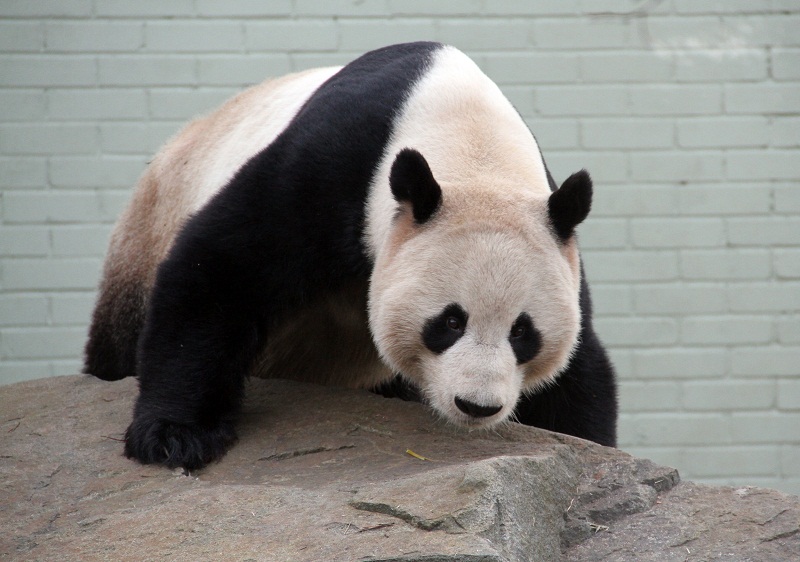Panda's Handstands Give Hope for Spring Fling

Suggestive handstands and moaning noises in the giant panda enclosures at the Edinburgh Zoo have keepers hopeful that its pair of endangered bears will mate in the coming weeks.
Zoo officials said this week that the male panda, Yang Guang has been "spotted doing panda gymnastics against trees, walls and rocks, by going upside down on his front paws and scent marking as high up as possible." In a separate enclosure, female panda Tian Tian has started calling out to Yang Guang. Her bleating is a sign that the breeding season looms for the normally quiet animals.
Pandas have a very narrow mating window that occurs just once a year and lasts only for a few days. The bears are solitary animals in the wild, so it's crucial for them to have calling cards to find each other in the forest during this time. That's why male pandas like Yang Guang often pee in a handstand when they're horny. Sprayed higher up on trees, the urine's odor field is maximized.
"We're delighted that both Tian Tian and Yang Guang have started to scent-mark and call, both clear behavioral indicators of courtship and mating behavior," said Iain Valentine, who is in charge of the pandas for the Royal Zoological Society of Scotland. [The Animal Sex Quiz]
Yang Guang has been eating constantly to drive up his weight, wolfing down up to 110 pounds (50 kilograms) of bamboo each day, as opposed to his normal 77 pounds (35 kg) of food, zoo officials said. In the wild, the male panda would need to pack on pounds for the breeding season to have enough energy to travel through female territories, compete against other male suitors and produce sperm.
Tian Tian and Yang Guang are both 9 years old and have successfully bred before, although not with each other. To get the pandas more comfortable with one another's scent, keepers have been letting the separated bears swap enclosures this month. They also have been timing lighting levels inside both panda enclosures to simulate natural light levels outside, since this can affect the bears' all-important hormone levels.
Tian Tian went into estrus on April 2 last year and made several mating attempts with Yang Guang over a three-day fling, but did not get pregnant. Valentine said it is too early to tell when exactly the pandas will be ready to mate, "however, early indicators do suggest the breeding season will probably fall in March this year."
Get the world’s most fascinating discoveries delivered straight to your inbox.
Even after the panda pair (hopefully) gets it on, veterinarians won't know if the mating was successful until the summer. When a female panda doesn't conceive after ovulating, she almost always undergoes a false pregnancy that mimics the real thing with lots of sleeping, nest-making and a spike in hormone levels.
Today there are 44 giant pandas living in zoos outside of China, where the bears' only current natural home exists. As just 1,600 pandas are thought to be left in the wild, researchers maintain that captive breeding is an important way study and conserve the endangered species. In addition to habitat loss from human activities and low reproductive rates, giant pandas' survival is also threatened by climate change.
Follow LiveScience on Twitter @livescience. We're also on Facebook & Google+.



